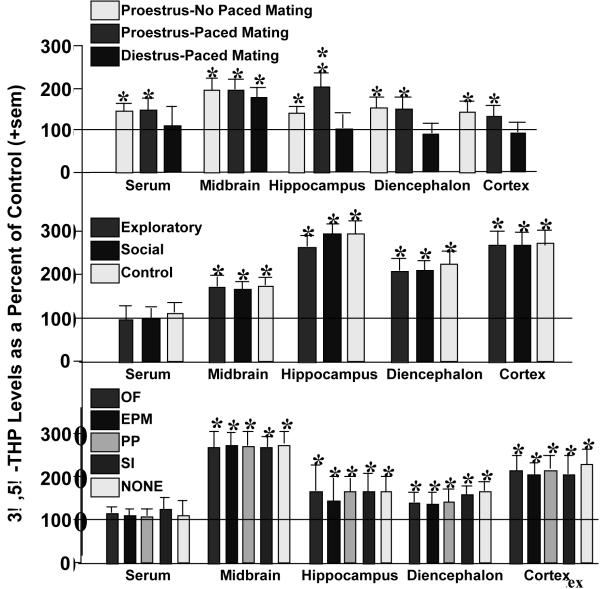Figure 5.
Depicts 3α,5α-THP levels in serum, midbrain, hippocampus, diencephalon, and cortex of proestrous or diestrous rats that engaged in paced mating or not (top), proestrous rats that engaged in exploratory (open field and elevated plus maze) or social (partner preference and social interaction) or no tasks with paced mating (middle), and proestrous rats that engage in only one task from above (open field, elevated plus maze, partner preference, social interaction, or no task) with paced mating (bottom). Line indicates performance of non-mated diestrous (top) or proestrous (middle, bottom) control. * indicates different from control, p < 0.05.

